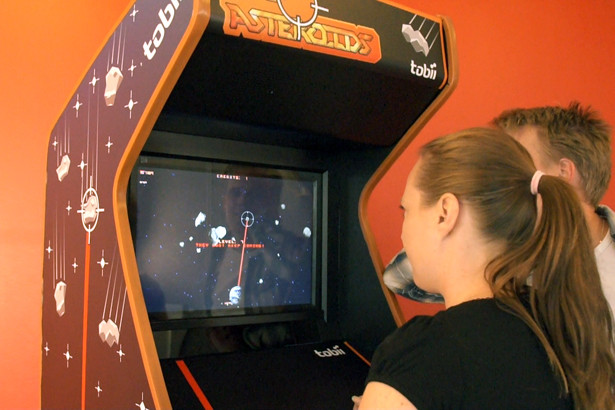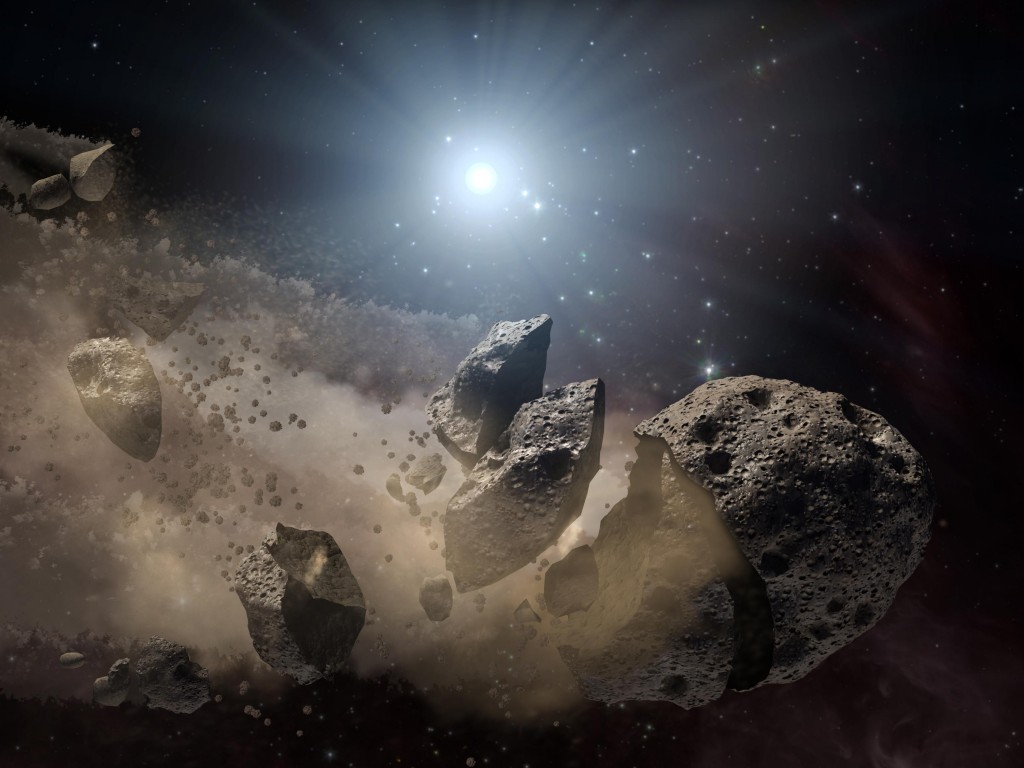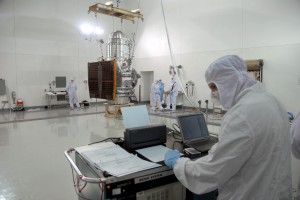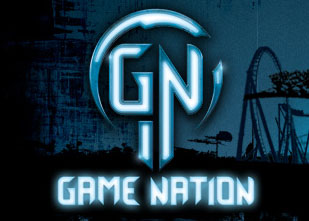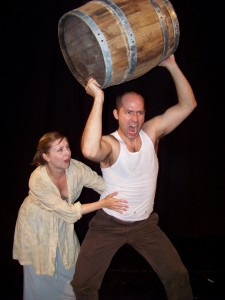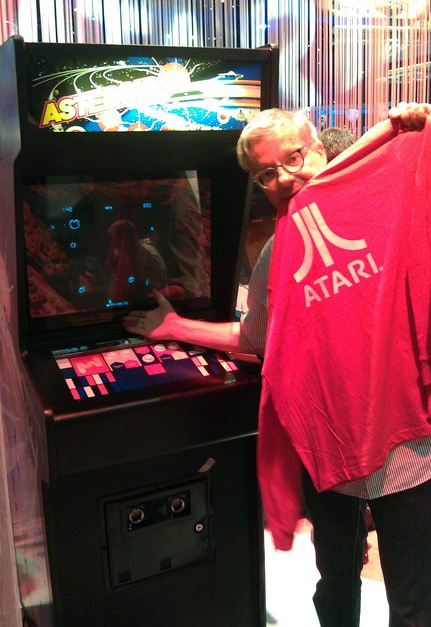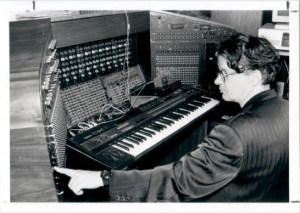Tobii Technology Builds Eye-Controlled Asteroids Cabinet!
Posted on November 06, 2011Tobii Technology has built a one-off Asteroids arcade cabinet, designed to showcase their eye-tracking technology. Â The game made its premiere at CeBIT in March, to demo eye-tracking on laptops. Â This is another step towards more natural human-machine interaction, and according to Tobii, much faster than hitting buttons or full-body motion sensors.
The full arcade version of Eye-Asteroids makes its debut on Tuesday, November 8, 2011, at the Dave and Buster’s in Times Square, New York, before heading off on a world tour. Â Known stops are London in late-November, and Las Vegas at CES next year.
The game is much closer to Missile Command than Asteroids, as you protect Earth from incoming ELEs (Extinction Level Events) by blasting them with lasers with your eyes. Â They could have used this technology to create Superman-Meets-Big-Buck-Hunter, but we approve of their choice.
The game’s debut corresponds with Tuesday’s near-Earth encounter with a real asteroid, that will pass by closer than the moon. Â Read about that here.
We’ll stop by Dave and Busters for a full review. Â Check back for that!
Engadget’s coverage of Tobii at CeBIT (includes video):
http://www.engadget.com/2011/03/01/tobii-and-lenovo-show-off-prototype-eye-controlled-laptop-we-go/
Pocket-lint’s report of Eye Asteroids:
http://www.pocket-lint.com/news/42895/tobii-eyeasteroids-arcade-machine-eye-controls
Tobii’s Site:
http://www.tobii.com/
NASA Survey Finds Fewer Asteroids Near Earth
Posted on October 20, 2011Observations from NASA’s Wide-field Infrared Survey Explorer (WISE) reveal that there are fewer near-Earth midsize asteroids than originally thought (link). Â It seems the photon cannons are working.
WISE is also searching for the origins of the dinosaur-killing asteroid. Â NASA’s caption for this artist’s rendition reads:
Scientists think that a giant asteroid, which broke up long ago in the main asteroid belt between Mars and Jupiter, eventually made its way to Earth and led to the extinction of the dinosaurs. Data from NASA’s WISE mission likely rules out the leading suspect, a member of a family of asteroids called Baptistina, so the search for the origins of the dinosaur-killing asteroid goes on.
But check out these actual pictures taken by WISE.  Stunning.  A wide-field infrared imager is the way to photograph space.
Asteroids Coming To Game Nation Theme Park
Posted on August 23, 2011In May, 2010, some folks announced their plans to create Game Nation, an experiential video game theme park and resort. They’re still working out details like the park’s location, but they just announced licensing with Atari.
“The possibility of having great classic games like Centipede, Asteroids and Missile Command made into fully interactive rides and attractions would certainly be a global success,” announces Game Nation’s website.
Now if they include Atari’s Roller Coaster Tycoon, things could get pretty meta.
Classic Games Adapted For Stage In “Theater Of The Arcade”
Posted on August 10, 2011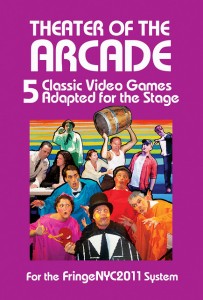 For decades, Atari Asteroids has been calling out for dramatic adaptation, and Jeff Lewonczyk has responded with his play, “Theater of the Arcade.” The work is five scenes inspired by classic video games, each written in the style of a different well-known playwright.
For decades, Atari Asteroids has been calling out for dramatic adaptation, and Jeff Lewonczyk has responded with his play, “Theater of the Arcade.” The work is five scenes inspired by classic video games, each written in the style of a different well-known playwright.
The official synopsis reads: “A violent brute holds an innocent young woman captive and attacks anyone who dares approach. A glutton eats everything in sight while running away from the ghosts that haunt him. A lone survivor forges a peril-ridden path towards a lush refuge he can never reach. Are these the plots of classic video games, or are they searing narratives of modernist drama?”
The Asteroids scene is entitled “Magdalene Magellan Mars,” and channels the voice of David Mamet. “Theater of the Arcade” was originally part of the 2010 Game Play festival, and is about to have its second staging in the 2011 New York International Fringe Festival, with 5 performances from August 13-27.
We spoke with Jeff Lewonczyk to find out more.
Atari Asteroids: What was your inspiration for Theater of the Arcade?
Jeff Lewonczyk: The Brick has been doing this video-game theater festival called Game Play for the past few years. Early last year, when we were discussing programming for the second (2010) edition, I casually blurted out that I thought it would be fun to do a play that actually treated the narratives of old-school video games as if they were the stuff of serious theater. Gyda Arber, the festival’s producer and curator and a good friend, immediately volunteered to direct it if I were ever to write it. So I kind of did it on a dare to myself.
As I worked more on each of the pieces, I grew more and more intrigued by what went into developing something essentially non-narrative into a story format. In order to make it work to the fullest extent, I realized that each of the plays needed to have an analogue in the theater world, and so I ended up using each game to parody a specific playwright with a highly recognizable style. The result ended up being a weird hybrid, which satisfied both gamers and theater fans, but in very different (though often highly overlapping) ways.
AA: What drew you to the games that you ended up adapting?
JL: Mostly, they were the games I grew up with. I was never a skilled gamer per se, but I had a friend who had an Atari 2600, and going over there and playing it – or, more likely, watching him play it – was like a window onto another realm. Also, these games were just in the air at that time, pop-culture wise – cartoons, cereal, novelty music, you name it. I was always attracted to the iconography of those early games, and they retain a high nostalgia value for me. However, I think a reason I found myself drawn to adapting those, as opposed to later-generation games, is that they’re wide open to interpretation. Like, what kind of story is Pac-Man, really? Who the hell is this yellow guy, and why is he consigned to a haunted maze where all he can do is run around and eat? Or take Asteroids – who exactly is flying this ship, and why is he (or she?) trying to blow up all these space rocks? There were a lot of possibilities.
AA: What can you tell us about the Asteroids play, “Magdalene Magellan Mars?”
JL: Well, I don’t want to give TOO much away, since we’re about to open in a remount of Theater of the Arcade at the New York International Fringe Festival on August 13, but I will say that it’s about the question I asked above: who’s flying these ships, and why? It’s essentially a power struggle between two pilots, an old pro and a younger hotshot, who are both called in for questioning to find out which one of them is shirking his duties and not blowing the asteroids into small enough pieces. There’s also a sexual element, since the interrogator is female, and there hasn’t been a woman on their base in years. Excitement!
AA: And what’s the connection between Asteroids and David Mamet?
JL: The truth is, it took me a while to fall into that combination. I had known from the beginning that I wanted one of the pieces in the show to be one of the outer-space games, but I couldn’t decide between Asteroids, Missile Command or Space Invaders. When I started thinking about playwrights, I realized that Mamet would be a great choice, since blowing things up is an inherently masculine activity that brought to mind the testosterone-fueled real-estate world of Glengarry Glenn Ross. The clincher for Asteroids, though, was nearly abstract – Mamet’s intentionally choppy and fragmented language reminded me of the ever-smaller pieces of detritus that result from blowing up asteroids. The combination of fragmented space rocks, fragmented language, and the fragmenting of human beings when they’re isolated on a remote base on another planet destroying things for a living all came together into a single storyline.
AA: Brilliant. Now beyond your background knowledge, growing up around the Atari 2600 and reading plays, what sort of new research did you do in creating this piece?
JL: I played the game online quite a bit, and I read up on its history via Wikipedia and a few other gaming history sites. The truth is, though the piece is riddled with references to the game play, there were some things I wasn’t able to incorporate without being awkward or contrived. The UFO, for instance, doesn’t make an appearance, nor does the hyperspace function. I definitely had some purists grouse about that to me after the show, but what can you do? It’s a work of fiction – sometimes you need to sacrifice details for the big picture.
AA: Have you done anything else like this play?
JL: Not exactly. Everything I’ve ever worked on has had elements of pastiche, but not to the extent of doing direct parodies of existing playwrights or adapting existing entities into a new form like this. Still, I’m in love with the idea of reinventing the things we see in our culture and the world into new terms and seeing where the transformation leads, and this show definitely falls into that. I’ve had people suggest that I could just keep churning out short plays based on games, but I feel like I’d run out of truly archetypal games rather quickly, and that it would lose its luster fast. That being said, I do still kind of want to do Space Invaders as a big musical dance number, or a Shakespearean Joust, or – and this is the one that I actually spent a while trying to accomplish for the original run – a Chekhovian take on Tetris. So maybe I’ll return to the idea at some point – only time will tell.
Devo’s Mark Mothersbaugh + Asteroids
Posted on June 08, 2011Mark Mothersbaugh, co-founder of Devo and frequent composer for Wes Anderson, cartoons, TV shows, and lots of video games, is pictured here with the Atari Asteroids machine at E3 Expo 2011.
He’s also a Raymond Scott Archive Board Member, and owns a rare version of Scott’s Electronium (1950s) — one of the most beautiful and awesome music sequencers you’ll ever see. Â If you don’t know who Raymond Scott is, look him up! Â It makes sense that Mothersbaugh was found hanging out by the Asteroids machine.
Holding up his new Atari shirt, Mothersbaugh said, “Atari is the best logo ever, better than the Playboy Bunny!”
Photo is from Atari’s Facebook page.
[Update] – we just came across this picture of Mothersbaugh sitting at the Electronium in 1993 (read the full writeup at Synthtopia).
From the Archive: International Atari Tournament
Posted on June 03, 2011
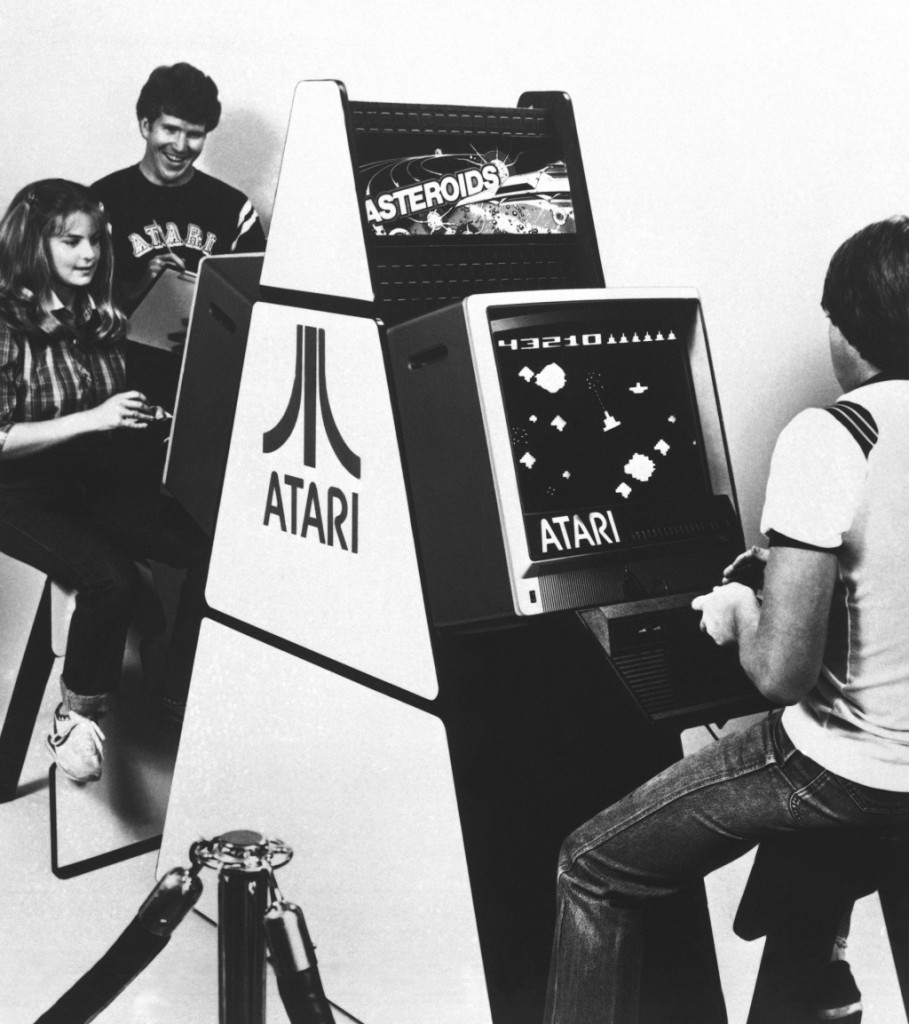 David M. Ewalt at Forbes just dug this image out of the archive: Promotional photo of modular game stations at the first Atari International Asteroids Tournament, at the Chicago Expocenter on Halloween weekend,1981.
David M. Ewalt at Forbes just dug this image out of the archive: Promotional photo of modular game stations at the first Atari International Asteroids Tournament, at the Chicago Expocenter on Halloween weekend,1981.
